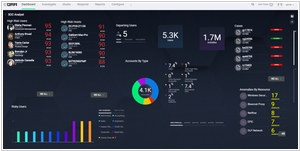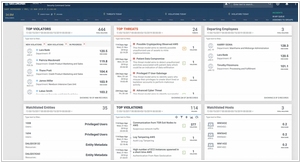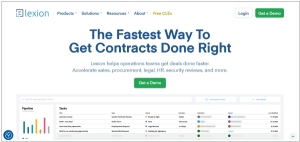Gurucul vs Securonix
August 01, 2023 | Author: Michael Stromann
See also:
Top 10 SIEM software
Top 10 SIEM software
Gurucul and Securonix are two leading vendors in the field of User and Entity Behavior Analytics (UEBA) and security analytics, but they have distinct features and focuses. Gurucul's platform is designed to detect and prevent insider threats, external attacks, and fraud by analyzing user and entity behavior patterns across an organization's network. It utilizes machine learning and AI algorithms to build behavior profiles and identify anomalies, enabling proactive threat detection and risk mitigation. Gurucul's key strength lies in its ability to provide detailed contextual insights into user activities, helping organizations respond swiftly to security incidents and potential data breaches.
On the other hand, Securonix is another advanced UEBA platform that specializes in security analytics and threat detection. It leverages machine learning and behavior analytics to monitor and correlate activities from users, entities, and applications across the IT environment. Securonix's platform offers strong capabilities in detecting insider threats, account compromise, and advanced cyberattacks by creating risk-based user and entity profiles. Moreover, Securonix extends beyond UEBA to provide security orchestration, automation, and response (SOAR) features, enabling automated incident response and threat hunting.
A significant difference between Gurucul and Securonix lies in their approach to analytics. Gurucul places a strong emphasis on user and entity behavior analytics, making it particularly effective at identifying insider threats and malicious activities within an organization. On the other hand, Securonix combines UEBA with broader security analytics and SOAR capabilities, providing a more holistic approach to cybersecurity with the added benefit of automated incident response. Organizations should evaluate their specific security needs and priorities to determine which platform aligns better with their requirements and overall cybersecurity strategy.
See also: Top 10 SIEM software
On the other hand, Securonix is another advanced UEBA platform that specializes in security analytics and threat detection. It leverages machine learning and behavior analytics to monitor and correlate activities from users, entities, and applications across the IT environment. Securonix's platform offers strong capabilities in detecting insider threats, account compromise, and advanced cyberattacks by creating risk-based user and entity profiles. Moreover, Securonix extends beyond UEBA to provide security orchestration, automation, and response (SOAR) features, enabling automated incident response and threat hunting.
A significant difference between Gurucul and Securonix lies in their approach to analytics. Gurucul places a strong emphasis on user and entity behavior analytics, making it particularly effective at identifying insider threats and malicious activities within an organization. On the other hand, Securonix combines UEBA with broader security analytics and SOAR capabilities, providing a more holistic approach to cybersecurity with the added benefit of automated incident response. Organizations should evaluate their specific security needs and priorities to determine which platform aligns better with their requirements and overall cybersecurity strategy.
See also: Top 10 SIEM software





